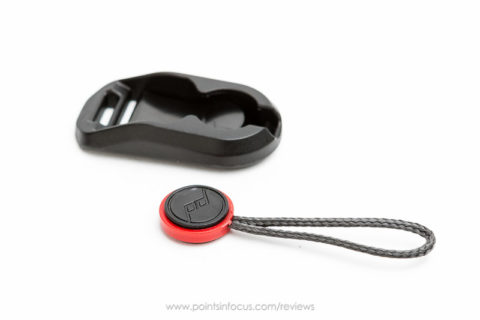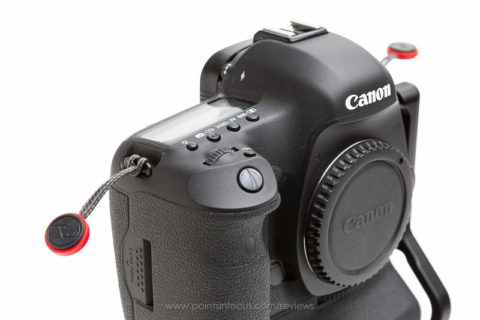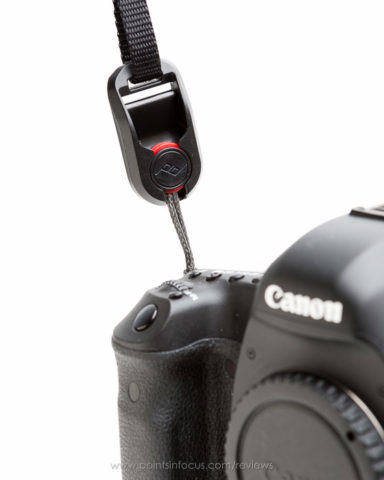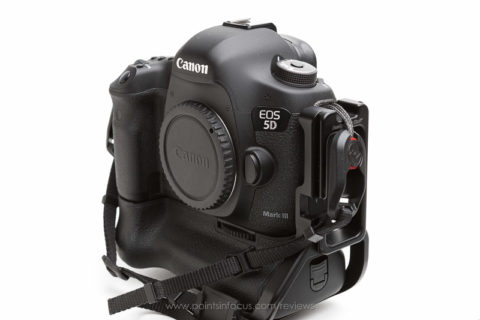Peak Design Anchor Links Review
I have a love hate relationship with camera straps. When I’m away from the studio or the house, I typically want one just to insure that I have something solid attached to my camera so I don’t drop it or it’s harder to steal. On the other hand, in the office and around the house, straps more often than not get in my way. A quick release system was necessary, but finding one that was good was far more of a problem.
I started with the usual slew of quick release straps, like those from OpTech USA and Lowepro. In all of the cases, I tried the straps left long tails on the camera when the strap was removed—more often than not, I found these tails to be even more problematic than a full strap.
More than a year ago I came across the solution that looked ideal when I found Peak Design products being talked about. Unfortunately at the time, Peak Design didn’t offer their quick release connectors for sale individually, and I wasn’t about to buy $40 camera straps just to hack the connectors off them.
This last August, that situation changed. In their latest round of product released, Peak Designed elected to offer their quick release strap system as a stand-alone product, Anchor Links. Needless to say, I quickly backed their Kickstarter campaign, and now after a slight delay I have my anchor links in hand.

So why Anchor Links?
When I have a strap on my camera, I want to be sure that it’s not going anywhere. Quick release is fine, but I have to be comfortable with the quick release system being secure. Unfortunately, most quick release systems use the typical side release quick release buckles. Most systems use buckles that are designed to “dig in” to prevent release when under tension, but there’s always been a lingering concern in the back of my mind that they’ll come loose.
Anchor Links go about the connector problem in a different way.
They’re made up of two parts, a disk on a short high strength loop that you attach to your camera, and a high strength plastic “cradle” connector that goes on your strap. To attach the strap to your camera you slip the disk in the cradle until it locks in place.

Unlike the traditional quick release buckle though, the failure mode of unlocking the Anchor Link is for tension to continue to hold the disk in the connector.
Or perhaps another way to look at it is to compare the Anchor Link connector to the MiniQD loops that I had been using in the interim. The MiniQD loops are your typical quick-release buckle, with the safety aspect being that the clips are designed to be hard to press when under tension. However, in the end, even under tension the two tabs don’t lock so positively that they can’t accidentally be released, and vwip there goes your camera. Now I will be honest, in about a year of use with the MiniQD loops, I never did have one fail, but it’s still something that nagged me in the back of my mind.
With the Anchor Links, because the strap side connector cradles the disk from the camera, even if I press the disk and unlock it, it still can’t just fall out of the connector unless I have the connector upside down.

All told, this gives me a huge amount of piece of mind that I didn’t really have with the MiniQD loops.
Beyond the locking mechanism, my next concern goes to overall strength. After all what good is a quick release system if the thing can break well before the strap does. Peak Design uses Vectran cord for the loop section that attaches to your cameras. The cords themselves are rated to 150-pounds of force. That’s more than enough for even a pro-DSLR with a 600m f/4 lens attached, by a factor of 10 or so.
The rest of the Anchor Links are plastic, which is much harder to gage—and I’ll be honest here, I don’t really want to test these to destruction since I like them and want to keep using them. However, there’s much more load bearing plastic in the Anchor Link connector than in the quick release clips for either my MiniQD loops or in a typical quick release buckle. Given that, I wouldn’t expect the plastic connectors are good for at least as much force as the fabric loops are.
Together that’s another comfort factor. Though admittedly I had gotten mostly comfortable with the 50-pound test MiniQD loops, more margin is more margin and in this case more doesn’t hurt.
The final point I want to touch on is the connection itself. One of the things that I really started getting frustrated with with the MiniQD loops, and really any buckle style QR system, is the difficulty of connecting them one handed. Disconnections are easy enough, squeeze the tabs and pull. On the other hand, assembling two connectors that have to be plugged into each other and are both on floppy cords is next to impossible with one hand.
Because of the self-capturing design of the Anchor Links, it’s quite easy to strap up or unstrap a camera with one hand.

Do I sound sold on these? I should.
For $20 you get 1 strap and 2 cameras worth of Anchor Links. That works out to 2 of the cradle parts that go on the strap, and 4 of the disk-and-loop parts that go on your camera. You can order them directly form Peak Design’s store or help support content like this by buying them from this Amazon link(Affiliate Link) .
Comments
There are no comments on this article yet. Why don't you start the discussion?